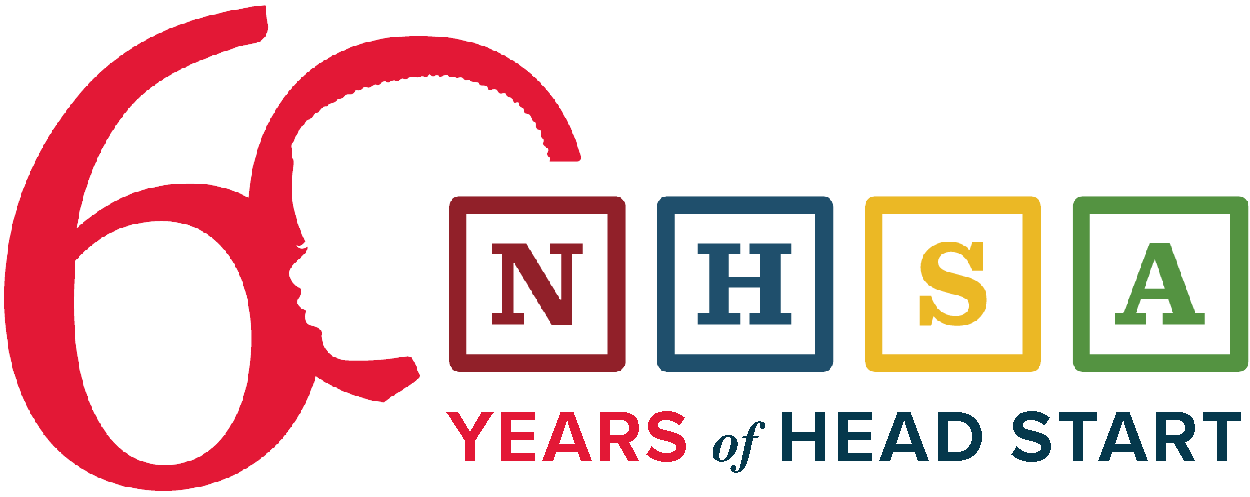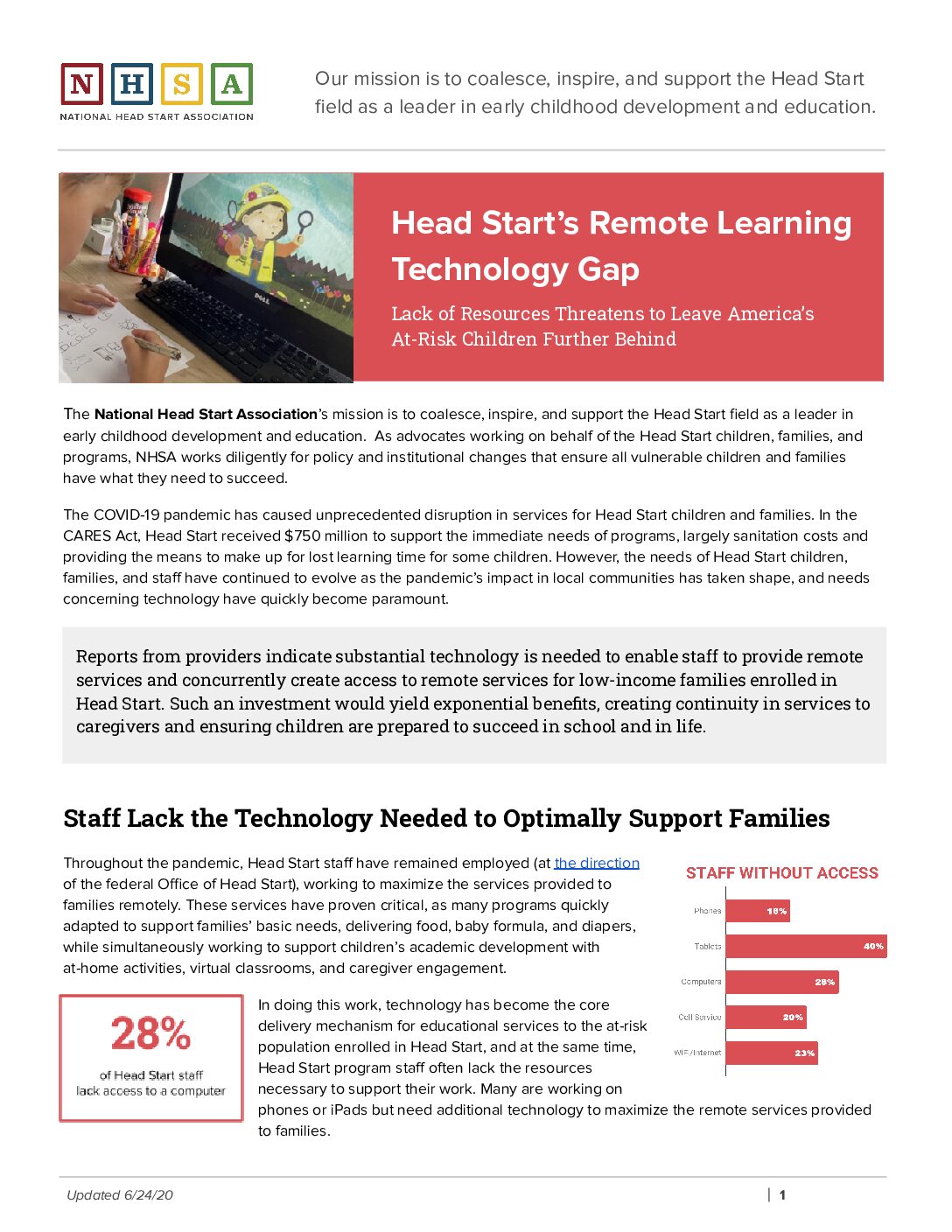The COVID-19 pandemic caused unprecedented disruption in services for Head Start children and families. In the CARES Act, Head Start received $750 million to support the immediate needs of programs, largely sanitation costs and providing the means to make up for lost learning time for some children. The needs of Head Start children, families, and staff continued to evolve and needs concerning technology gaps have become paramount.
Reports from providers indicate substantial technology is needed to enable staff to provide remote services and concurrently create access to remote services for low-income families enrolled in Head Start. Such an investment would yield exponential benefits, creating continuity in services to caregivers and ensuring children are prepared to succeed in school and in life.
Technology Gaps Limit Family Support Services
Throughout the pandemic, Head Start staff worked to maximize the services provided to families remotely. These services have proven critical, as many programs quickly adapted to support families’ basic needs, delivering food, formula, and diapers, while simultaneously working to support children’s academic development with at-home activities, virtual classrooms, and caregiver engagement.
A quantitative survey of the Head Start field further elucidates these technology needs. An astounding one in four staff lack access to a computer, one in five lack access to cell service, and one in four do not have adequate internet access to perform their job duties, despite each of these playing a critical role in effectively supporting children and families. When the survey is scaled based on program enrollment, the results indicate that more than 60,000 Head Start staff lack adequate access to the internet, and more than 40,000 phones are needed.
In order to target technology for Head Start staff providing services to families, there would be one-time costs in purchasing technology and limited recurring costs in mobile hotspot subscriptions for a smaller subset of staff. Laptops or tablets, along with hotspots for staff with inadequate access to broadband would cost $102 million. Funding and resources to answer staff technology needs, even in part, would yield exponential benefit to the families served by these clearly under-resourced staff.
This policy brief explores how technology has become the core delivery mechanism for educational services and how many Head Start program staff lack the resources necessary to support their work.

